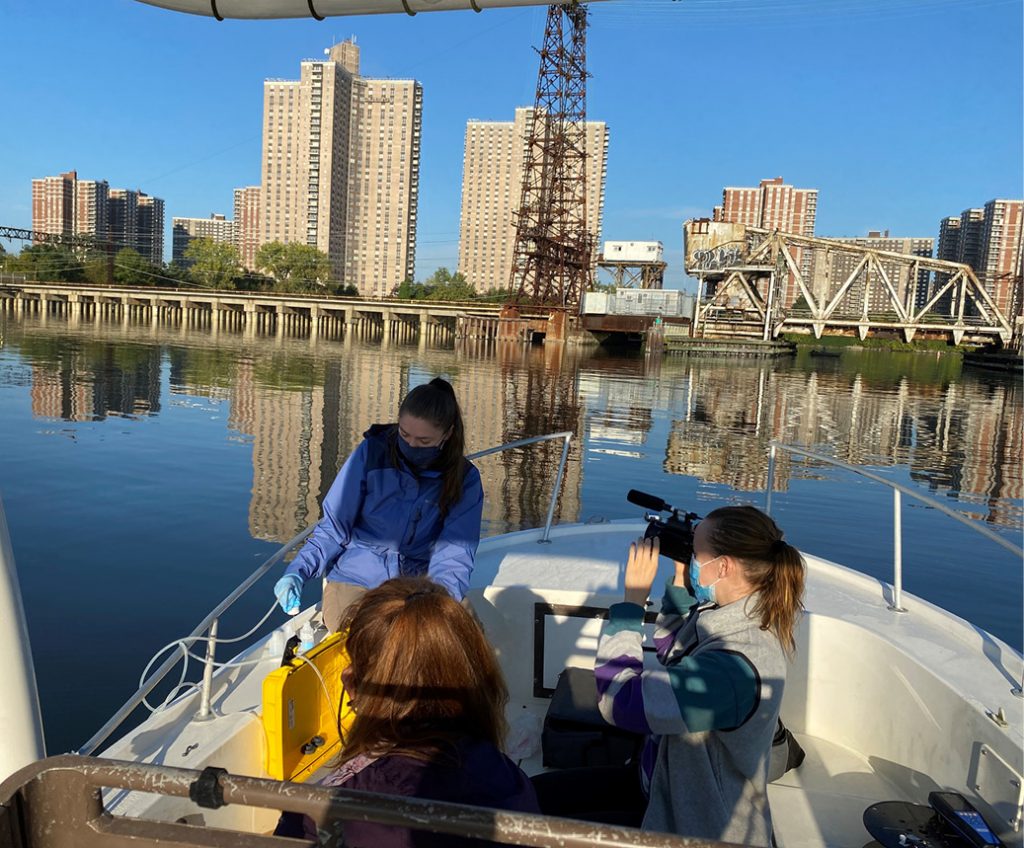Five Years of the Unified Water Study
By Peter Linderoth, Director of Water Quality, Save the Sound
The completion of the 2021 Unified Water Study season marks the fifth anniversary of this Long Island Sound-wide water quality monitoring program and the collaboration continues to grow!
Launched by Save the Sound in 2017, the Unified Water Study (UWS) is a groundbreaking water quality monitoring program developed so groups around the Sound can collect comparable data on the environmental health of our bays and harbors. Historically, the monitoring was conducted by different groups with different approaches, making it difficult to accurately compare water quality conditions in the Sound’s many inlets. By standardizing procedures, the UWS delivers high quality data to further our understanding of the Sound’s environmental health which, in turn, informs and supports actions to preserve and protect it.

Collaboration by many groups around Long Island Sound is vital to the ongoing success of Save the Sound’s Unified Water Study. To get yours involved, please visit savethesound.org. © SavetheSound.org
The Unified Water Study collects data on dissolved oxygen, water clarity, temperature, salinity, chlorophyll-a, and seaweed abundance. These parameters are useful independently, but together they are more powerful, characterizing how healthy conditions are for fish, crabs, oysters, eelgrass, and other life around the margins of Long Island Sound. This high quality, comparable data are submitted to New York and Connecticut regulatory water quality managers for Clean Water Act requirements plus they fuel the Bay Grades included in our biennial Long Island Sound Report Card and posted to SoundHealthExplorer.com where they are freely available to all for research projects.
UWS participants also use these data for advocating pollution cleanup and remediation in their respective waterways. Often UWS groups and Save the Sound partner on discussions with stakeholders and the public about details of the UWS data results and what they mean for a respective waterway. For example, elevated turbidity, a measure of water quality, can indicate excess sediments in stormwater from local construction sites or areas with large percentages of impervious surfaces. Another example would be large algal blooms and low dissolved oxygen levels which can indicate excess nitrogen entering the water.
Black Rock Harbor in Bridgeport, CT is a great example of local advocacy for improvements to water quality by a UWS monitoring group in collaboration with many other parties including Save the Sound. The Ash Creek Conservation Association and the Bridgeport Regional Aquaculture School and Technology Center both have members participating in UWS water quality monitoring. Current water conditions in the harbor are not supporting aquatic life to the extent required by the Clean Water Act. UWS data makes these conditions clear, and residents have used them in numerous public presentations to rally for improvement. Furthermore, UWS data will serve as baseline data for conditions prior to planned wastewater infrastructure improvements by the City of Bridgeport. We expect to see improved water quality, based on empirical data and field observations, as infrastructure improvements are put in place.
UWS data help advocates, and water quality managers identify sources of nitrogen pollution leading to poor water quality. Sanitary sewer discharges, onsite sewage (e.g. septic tanks), stormwater, and fertilizer are some of the sources discussed during public meetings. UWS data and nitrogen load modeling (estimates of nitrogen entering a system and its sources) serve as fundamental information for consideration when cutting nitrogen. For example, Cold Spring Harbor, NY has low dissolved oxygen and high seaweed abundance, both of which are generally linked to excess nitrogen. Over 35% of the nitrogen coming into Cold Spring Harbor is from septic systems. Together these findings point to septic as a major contributor to the harbor’s poor conditions and a source to prioritize for nitrogen reduction.
Preserving and restoring water quality along the margins of Long Island Sound is essential to maintaining the Sound’s overall health and the biological diversity. The Sound is on the right track, improving significantly from decades ago but protecting water quality will need long-term vigilance. The UWS, and projects like it, provide high quality data to inform decisions that will help determine the health of our waters far into the future.
Save the Sound is honored to work with our partner organizations in this critically important endeavor and welcome Guardians of Flushing Bay and North Fork Environmental Council who joined the UWS ranks in 2021, monitoring New York’s Flushing Bay, Mattituck Inlet and Goldsmith Inlet. This brings the total to 24 partner groups collectively monitoring the water annually in 41 Long Island Sound waterways! ■



